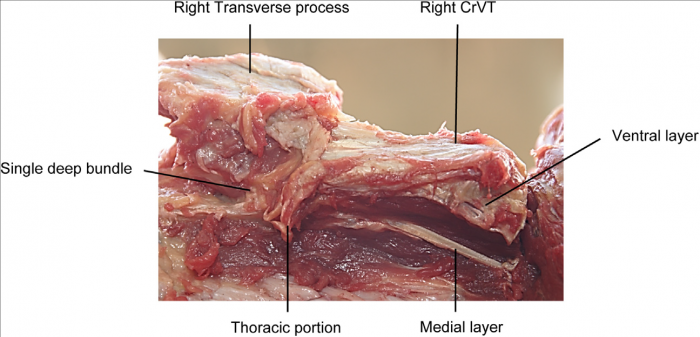
The implications of cervic vertebral malformations in horses
As the longus colli muscle attaches onto the 6th-7th cervical vertebrae, relevant asymmetry in this muscle was prospected in horses with reported malformations of the vertebrae in question. Therefore, the purpose of this study was to establish the relocation patterns of the longus colli muscle in horses exhibiting the reported congenital malformation and where possible, observe horses premortem for postural and/or locomotive dysfunction. The longus colli muscle plays an crucial role in the stabilisation, support, postural control and locomotion of the neck and cervicothoracic junction and inserts on mentioned vertebrae.
Nine horses were dissected and m. longus colli was analysed as well as formation of the 6th-7th cervical vertebrae. A veterinary screening on six of the horses was accomplished independently in advance.
This study showed that the gross morphology of the L. colli muscle varied in the presence of congenital malformation in C6, and/or C6 and C7. Additionally, asymmetry was noted in the joints, implying abnormal mechanical load. Premortem examinations confirmed that the horses exhibited proprioceptive and neurologic dysfunction as abnormal posture, ataxia, paresis, limb flaccidity, decreased limb tone and reflexes. This raises questions as to the equilibrium of affected horses and therefore the safety in handling and riding such horses, as was found in this study.
Expert opinion by Isabeau Deckers
This study reveals the potential impact of anatomical malformations and the other way around, approves anatomical arguments for dysfunctions in sport horses. The potential ramifications are neurologic dysfunction, loss of performance, and potential harm to horse and rider. Management programs to stabilize the musculoskeletal system in the cervicothoracic junction need therefore further investigations.
> From: May-Davis et al., Vet. J. xx (2015) 1-9. All rights reserved to Elsevier Ltd.. Click here for the online summary.


